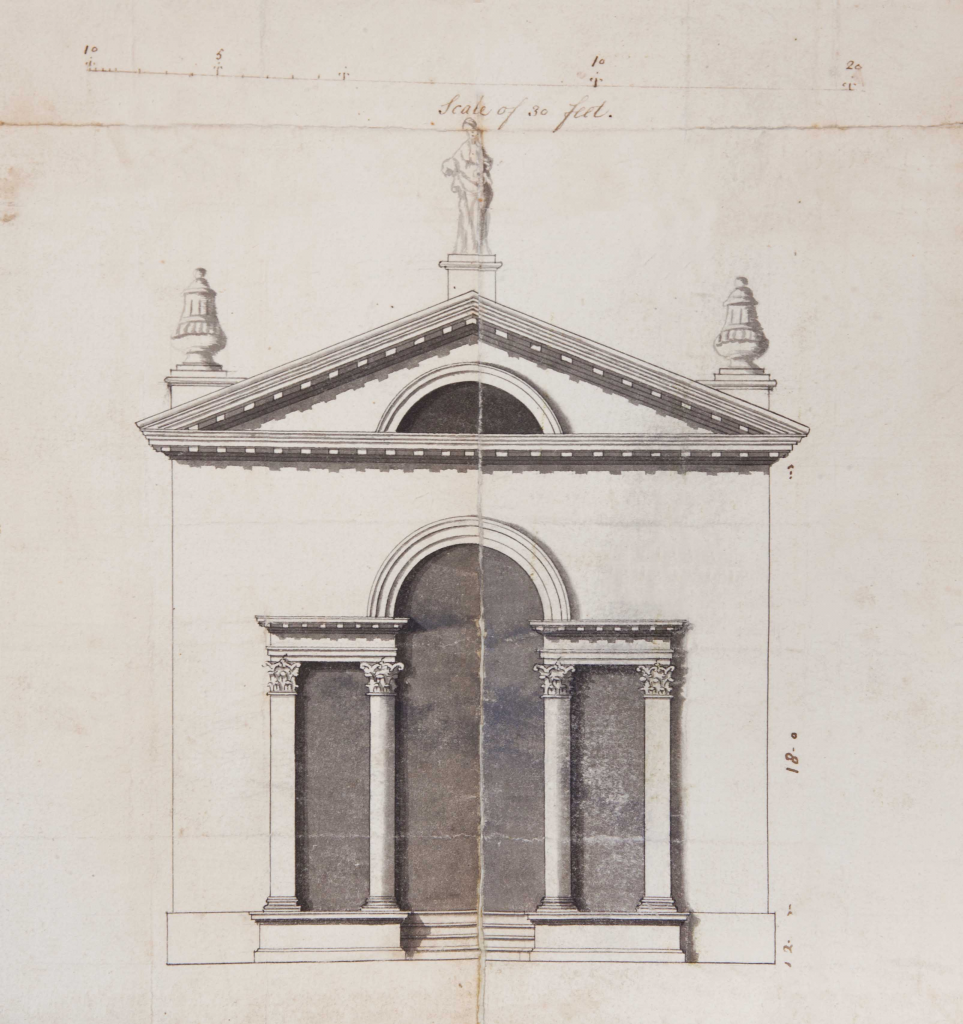Recent visitors will have seen that the daffodils across the estate are braced for a good show this year, including those freshly planted on the Echo path in October last year. As part of the work preparing the ground for that planting we had to deal with a large block of masonry, dumped there when the gardens were refurbished a few years ago. The block had been used as a base for one of the large stone balls, but had since been discarded and forgotten, however it has an interesting history.
A 3D scan of the block. An interactive version of the model can be found here.
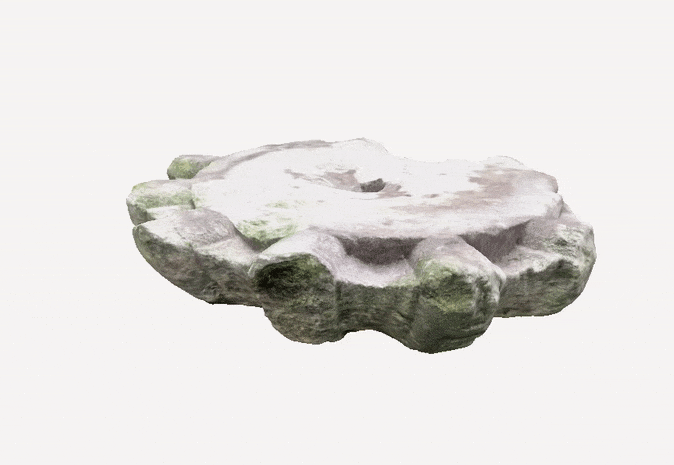
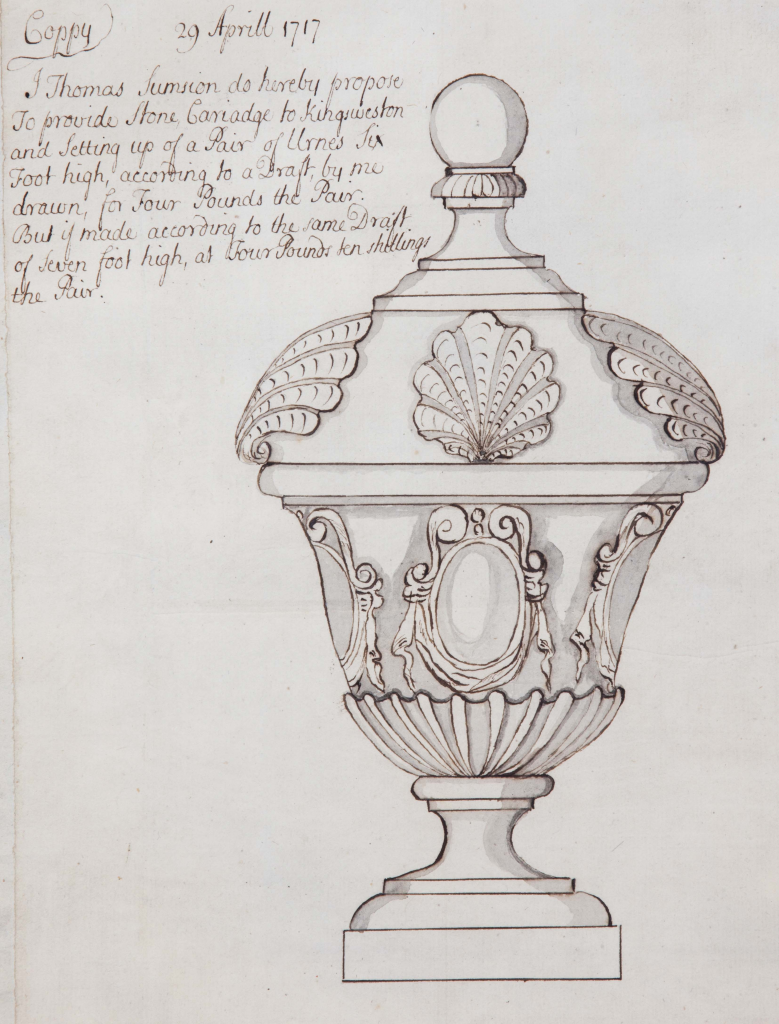
During the clearance work in October the block needed moving. It clearly had part of an historic carved stone element incorporated within it, but much was actually brick and concrete added when it was utilised for the stone balls. We broke away the modern accretions and we were left with a roughly circular stone slab with deeply defined gadrooning around the edge. Some of this had been badly damaged over the years, but enough is left to aid understanding of where it might have come from.
The form of the stone tells us that it was once part of an ornamental urn, or “potts” as they are referred to in contemporary documents. Similar urns are set up across the roofline of Kings Weston house, but this one would have been significantly smaller than those. The stone measures exactly 2 feet in diameter at its widest point, but is missing both the base or pedestal, and the main drum of whatever stood above. There is a staining on the upper surface of the stone showing that whatever sat upon it had a diameter of about 14 inches, set back from the ornamental edge by some distance. In the base there remains part of whatever fixing attached it to the base, and in the top surface there is a rectilinear hole that would have received the fastening for the top section. We’ve recorded the stone using a 3D scanning app and made it available here. The stone is likely to be Dundry stone, or possible a limestone from the Bath area, easily carved unlike the hard local Penpole Stone. The facades of the house use both local and imported types according to their ease of working.

Another of the complete urns with markedly similar features to the fragment, a
From its distinctive design we can be certain the fragment dates to the Baroque era of English architecture, perhaps between 1700 and the 1720s; this period obviously covers the time when the house was rebuilt and many of the garden buildings erected, but there’s a possibility that it might pre-date this work that began in 1712. The well-known engraving of Kings Weston published by Johannes Kip in about 1711 is peppered with urns and finials on gate piers and ornamental buildings. Of these structures the most densely forested with potts was the long-lost orangery. We believe this was built in around 1705, demolished probably in the 1760s, and is one contender for having been the source of the stone in question.
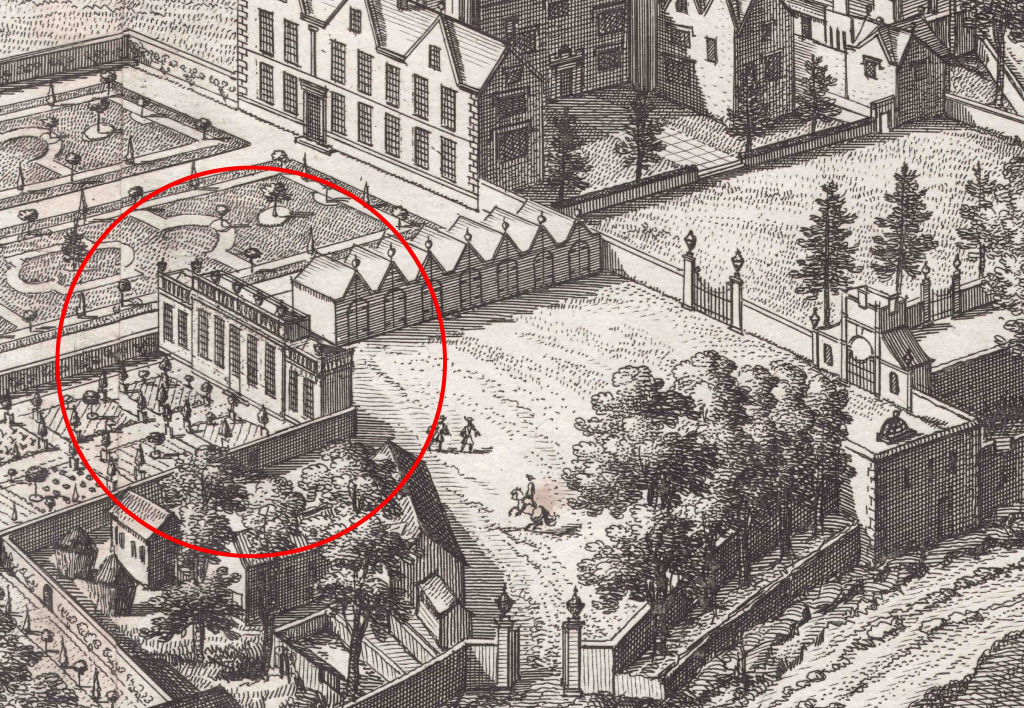
Another possible source is the house itself. We know that the Garden Front of the house once had another pair of urns mounted on the central pediment of that frontage. The design of those urns is unclear, but the most accurate depiction of them comes from 1724 and shows them as smaller than the other potts that ornament the parapets. If the detail is correct, then the stone could have made one of the top sections maybe, with the gadrooning being the widest section. However, the engraving is a measured scale drawing, and even these smaller urns would be 3 feet across, larger than the recovered stone.
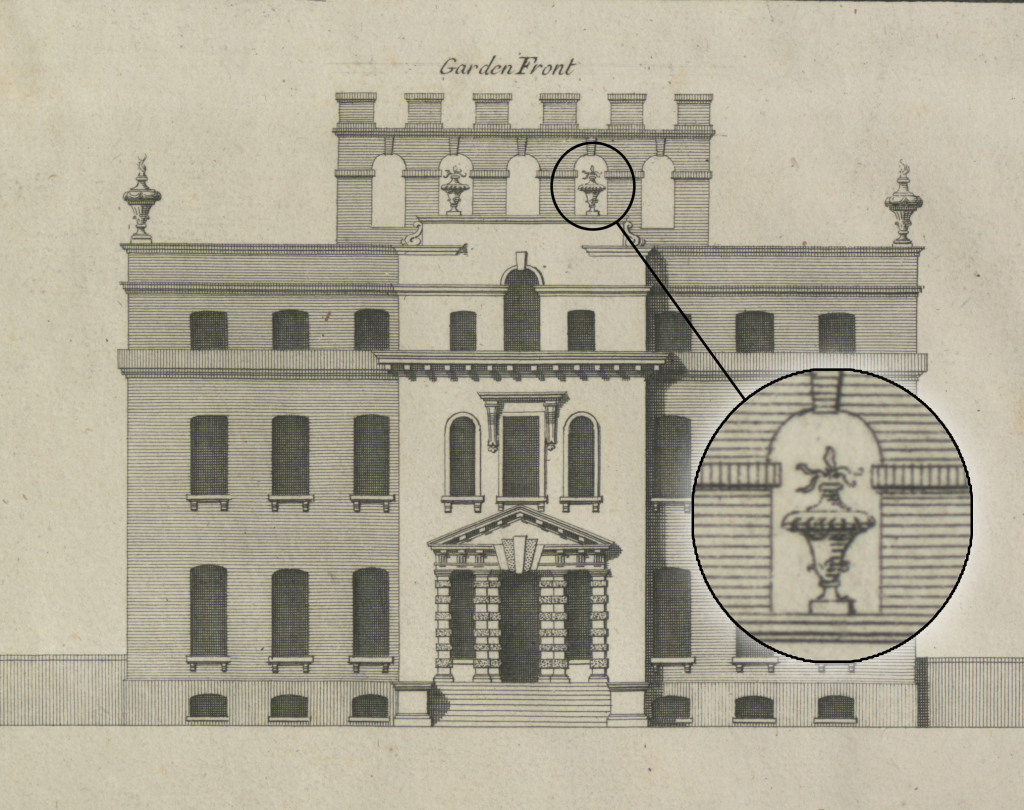
However, the strongest candidate for the source is the Loggia, built in 1718 to the north of the house, and thankfully still with us. This little Vanbrugh-designed frontage was grafted onto an existing banqueting house and several original drawings of it exist. A couple of these drawings have urns and a statue applied to the plinths mounted on top of the pediment, both are inexpertly drawn, added in a different ink and with a lack of realism betraying them as not being in Vanbrugh’s hand. We do know that the building was eventually finished with three urns on these plinths, as illustrated in the background of a 1746 drawing by James Stewart, where they project above the walls of the Great Court amongst other ornaments.
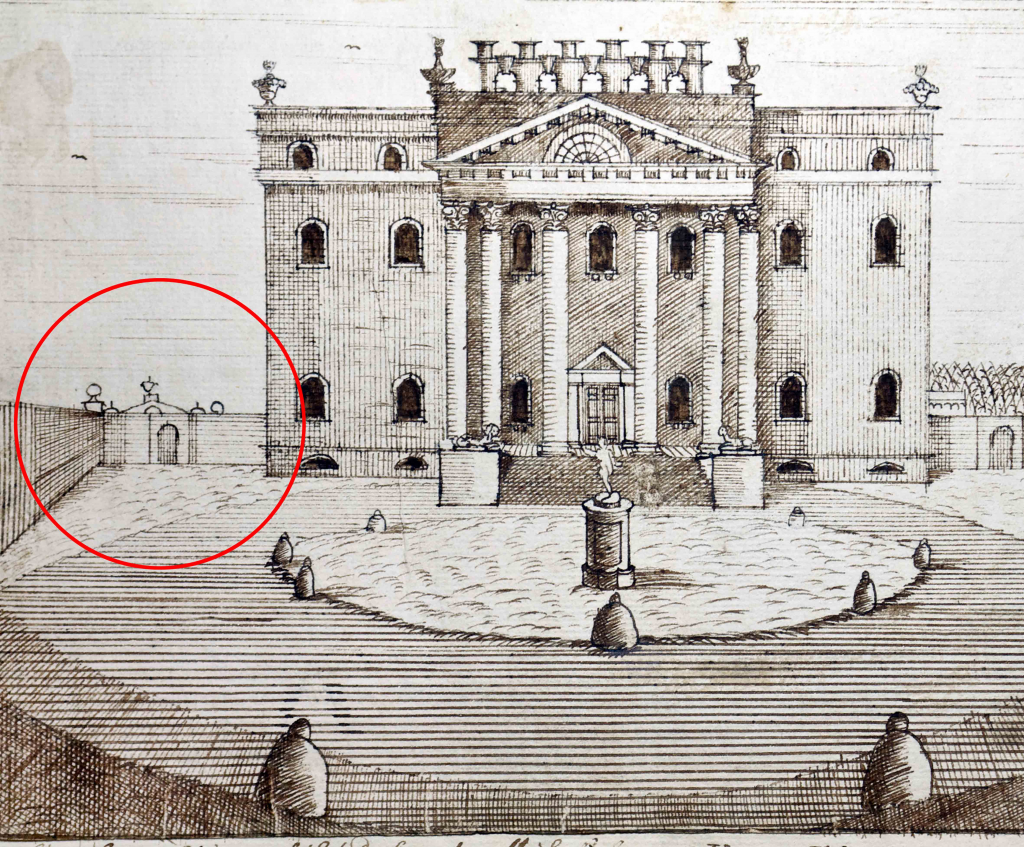
The smaller scale of the Loggia frontage would befit a smaller pott of the sort the recovered stone came from. Little is known about the appearance of the loggia between 1746 and an 1898 photograph taken for Country Life; By that time all trace of rooftop features had gone, and other photos from the same occasion show the stone balls already sited on the Echo Path, presumably with bases made out of the old urns. Although we can’t be certain, it seems that the fragment recovered last year is part of the early Eighteenth Century decoration of Vanbrugh’s Loggia, removed perhaps for safety, before being reused, then forgotten, until we salvaged it.


